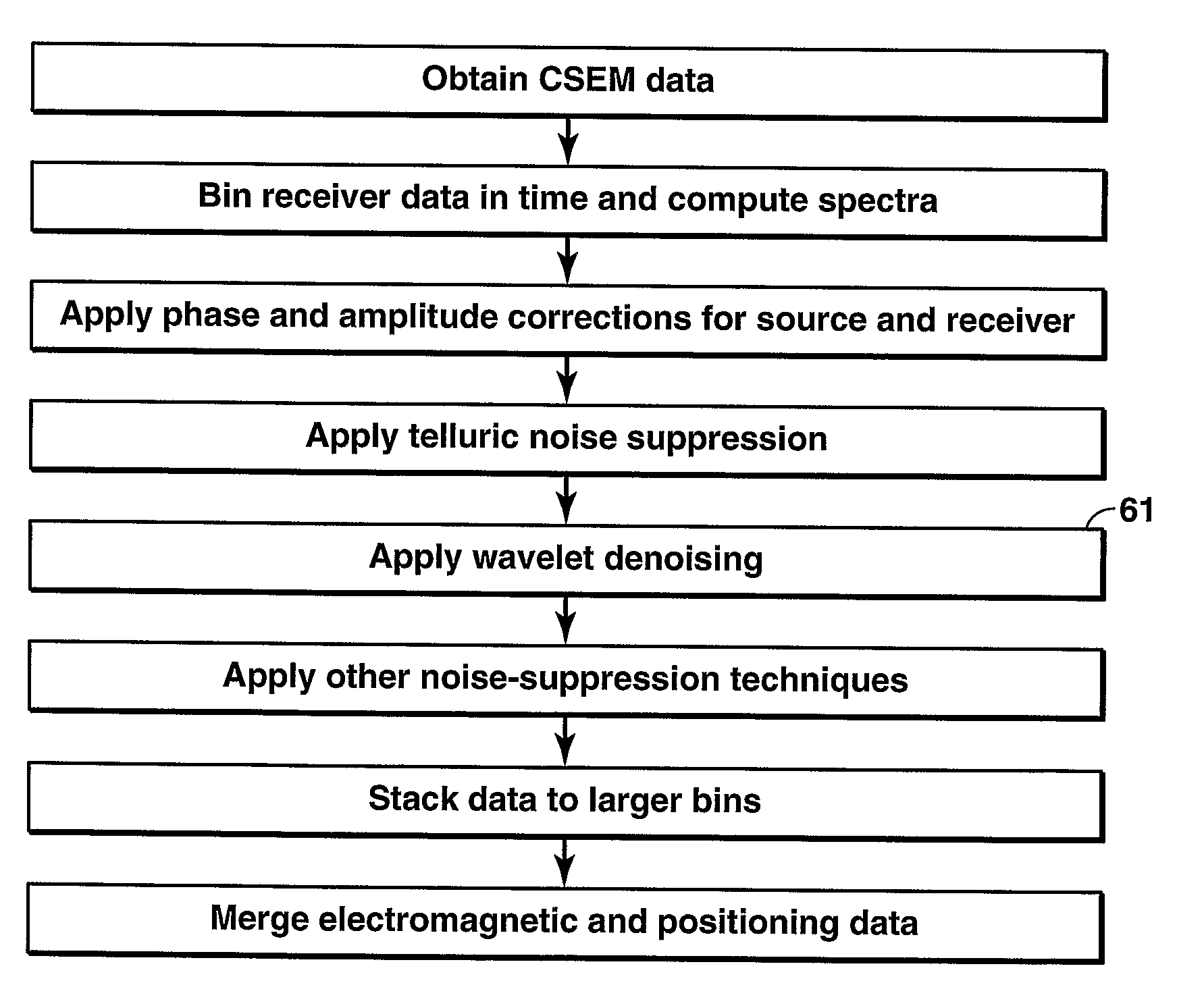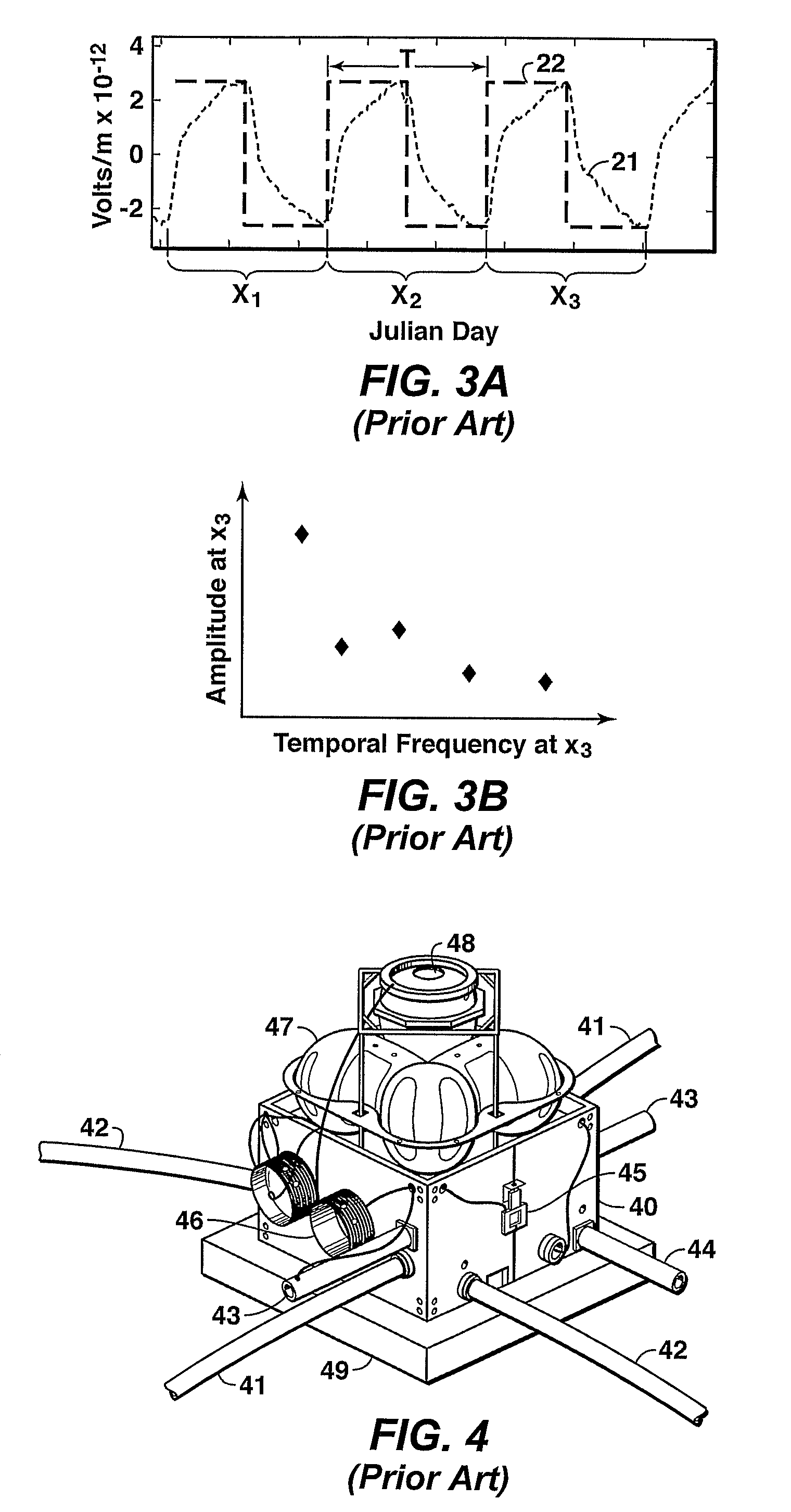Method for Wavelet Denoising of Controlled Source Electromagnetic Survey Data
a technology of electromagnetic survey data and wavelet denoising, which is applied in the field of geophysical prospecting, can solve the problems of limiting factors, weak response of earth to transmitted signals, and noise in measured signals, and achieve the effect of reducing magnitud
- Summary
- Abstract
- Description
- Claims
- Application Information
AI Technical Summary
Benefits of technology
Problems solved by technology
Method used
Image
Examples
Embodiment Construction
[0050]The present invention is a method for performing wavelet denoising to remove portions of CSEM data that (1) vary too rapidly in offset to be a legitimate response of the earth to the transmitted signal and (2) show persistent high-frequency behavior over a range of offsets. It encompasses various ways of performing wavelet decomposition and denoising so that the CSEM data processor may select the implementation that is most effective on a particular data set by contrasting the effectiveness of alternative embodiments of the invention.
[0051]FIG. 6 shows where the present inventive method (step 61) might be inserted into a generalized, typical processing flow for CSEM data. Those skilled in the art of CSEM data processing will recognize that the steps within a processing flow are always selected to meet the needs of a particular survey or data set and that those steps may be sequenced differently or different steps performed than shown in FIG. 6. This is particularly true in the...
PUM
 Login to View More
Login to View More Abstract
Description
Claims
Application Information
 Login to View More
Login to View More - R&D
- Intellectual Property
- Life Sciences
- Materials
- Tech Scout
- Unparalleled Data Quality
- Higher Quality Content
- 60% Fewer Hallucinations
Browse by: Latest US Patents, China's latest patents, Technical Efficacy Thesaurus, Application Domain, Technology Topic, Popular Technical Reports.
© 2025 PatSnap. All rights reserved.Legal|Privacy policy|Modern Slavery Act Transparency Statement|Sitemap|About US| Contact US: help@patsnap.com



